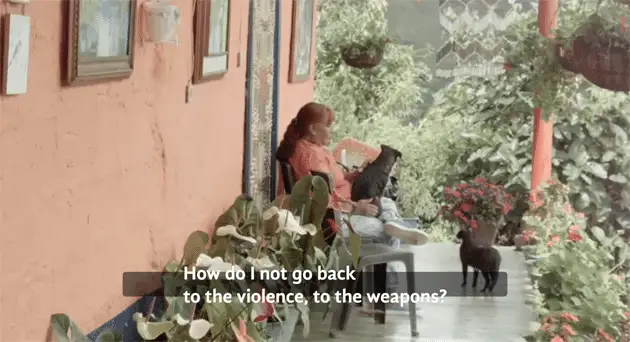
When watching your favorite films with subtitles, do you ever stop and wonder who or what is behind them? I’m sure the answer most of you will have is no or rarely. In this article, we will look at the people who create the subtitles we enjoy and enable us to appreciate foreign films with foreign languages more.
Subtitling is a film process that has grown in recent years. Being a film subtitler is a rather interesting profession that we rarely talk about. You might wonder why we call them unsung heroes, but it’s because they don’t get as much recognition as actors and film producers get, yet they also play a huge role in the completion of a film. As much as producers, directors, actors, and actresses get their accolades. We should not leave subtitles behind.
To fully bring your film into the reality of fruition, as most of the people like to call it, you would have to have a budget for actors, researchers set and costume designers, location scouts and cinematographers and also subtitles if your plan is to have subtitles in your film. That shows important subtitlers are. Just like everybody else on a set, we also plan for them.
You should note that as much as subtitlers come into the picture at the very last stage when the whole film process has ended, they still are as important as the rest of the cast members. It’s a collaborative process requiring an ongoing dialogue and support system from within to create a product consistent with the artistic vision.
When a film goes to the last stage, which is usually subtitling, the subtitlers have the power to mess up and destroy what the film production team plus actors worked on. They need to remain in the context and come up with a perfectly contextual film with subtitles. This is where you must be very keen as a film producer to get a subtitler who versed in what he or she does and is a professional. If the subtitlers do their jobs well, they bring the filmmakers’ vision to whole nations of new viewers. If they sacrifice quality, the film could become a laughingstock.
I already mentioned how everyone works hand-in-hand to make sure that the film comes out perfectly. That is not a privilege afforded to subtitlers because they work alone and under a tight schedule, which might between 24 – 48 hours if they are working with a great producer. It usually becomes hard to stay within context following the fact that they rarely work with the film director who is the person who directs how scenes on a movie should be.
Subtitles are a “by the way” for many production houses, regardless of how their role might be super impactful when you are trying to push your film across the boarders.
Do you know your subtitles?
A lot of films out there usually have terms and conditions for their actors depending on what movie they are working on. It would amaze if the subtitlers would get these glossary terms to assist them when working on their subtitles, but it rarely happens. They usually leave them to work by themselves, which sometimes proves to be a hustle for them. They would live them to ensure that scripts are accurate while they preserve the nuance of performances. If film production took houses took these steps, staying in context with the original film would never be a thing to worry about for subtitlers.
Did you know that as much as subtitlers use their expertise to help a film production house, they usually never get credited for the good work they do? I feel like that is very unfair considering the fact that literary translators usually get acknowledged on the cover of a book or the front page when doing translations for novels but it’s not the same thing when subtitlers do it for a film. At most, you might see the name of the company that contracted them.
What Exactly Do Subtitlers Do?
The most important thing that subtitlers do is translate existing content into any other form of language it might be their native or any other foreign language that they understand fully and completely. What this means before they even get to sync the wordings to a film they first have to translate them and make sure they are within the context of the original film. It is important to note that anyone can be a translator, but in this case; we are talking about professional translators who have a serious understanding of the original and target language, one who will not end up making mistakes while working on the translations.
Before, subtitlers would handle all the work of translation to the technicality of it all, but nowadays they deal more with creating the subtitles and leave the rest for the technical team to handle. Subtitlers make sure that the titles line up with cuts in the film. If subtitles linger during a cut, they can disrupt the brain’s ability to process them smoothly. We call this timing ‘spotting.’
They must also make sure that the subtitles go line in line with the audio. It might not go word for word because of the complexities of different languages, but they make sure that the texts usually have the same time capacity as the original audio to ensure that the viewers have time to read the subtitles. It normally appears just as the brain knows that the actor is speaking, the moment the viewer unconsciously wonders what the actor is saying. A perfectly timed subtitle appears as a response to that silent question.
They also make sure that break words like conjunctions appear on the second line of a subtitle text or on the next line if the text is too long to appear on the screen.
A good example of this step is a sentence like:
You should go home.
and do your chores.
That sentence should be written as.
You should go home and
do your chores.
The first statement looks a little off compared to the second one which is the correct way to write it.
The latter implies a stutter after the word and. It’s not a natural place for a pause. A lot of viewers could depict such a mistake, which they should, but professional subtitlers usually take all the rules into consideration.
There are a lot of decisions that a subtitler has to make when creating subtitles, which ensure that their work comes out perfectly fine and with no mistakes or looking off. Something like when the scene has a voice over the text be in italics but when the VO is reading text that appears on-screen, like a shot of a letter? Subtitling the VO doubles the text, but most subtitlers would agree it’s important to have them, anyway.
A subtitler must also understand fully what translation for film entails. They usually know that literal word-for-word translations are not the best option when translating for a film. Certain languages might lose cultural context if translated word-for-word, while it might not affect others. These are things that subtitlers usually take into consideration when working. A semantic translation might depart from the literal meaning of the source to preserve the rhythm and flow of the text.
The other forms of translations that you should know for your general knowledge are literal, faithful, communicative, idiomatic, and free translations, and trans-creation and adaptation which is not liberal enough and not considered a translation anymore.
A professional subtitler should be able to know which kind of translation best suits their work and situation. It is up to the discretion of the subtitlers which type of translation is best.
You might wonder whether subtitlers put more emphasis on the source language or the target language. The answer to that is that both languages usually get the same amount of emphasis, and it’s all a matter of balancing them both while still staying within context. Though note that most subtitlers use a semantic translation for the film’s title and semantic or communicative translation for the subtitles.
They also must take to account the cultural sensitivity of their target languages in order to not offend the viewers in the long run.
With this, you can see how important subtitlers are and how their job requires them to be hands-on when doing it. It’s not just about translation, there is a lot that goes into creating subtitles and that’s why I think they should receive their credits and acknowledgment as much as the other production team does. They are the unsung heroes of cinematography.







